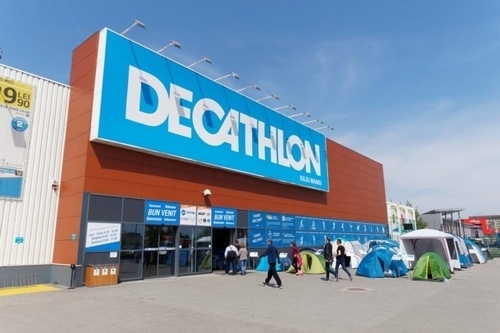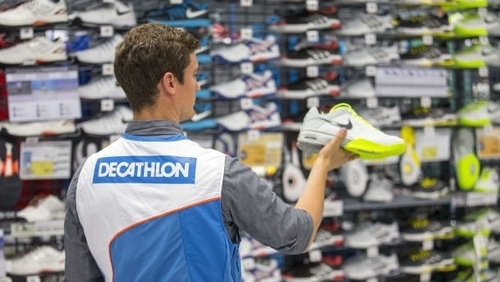Decathlon is a French retailer of sporting goods. It has the presence in 45 countries and is the largest sporting goods retailer in the world. In the year 1976, the company started in Lilly, France and was founded by Michel Leclercq. It started its expansion a decade later to Germany in 1986, Spain 1992, and Italy etc. It has also expanded to China, Malaysia, and the Philippines and has more than 82000 staffs from 80 different nationalities.
The retailer has a wide range of sporting goods from tennis rackets to advanced scuba equipment. They have stores that are very large in size at an average of 4,000m². The company owns over 20 brands with R&D facilities all over France committed to developing innovative designs and registers around 40 patients per year. Each brand or sporting group has a dedicated product development and design tools. As of August 2018, the brand has 1414 Decathlon stores worldwide in 15 countries.
Table of Contents
Strengths in the SWOT Analysis of Decathlon
1) Private Labels
Decathlon has 20 brands and each brand is dedicated to creating and innovating products for specific sports. Currently, Decathlon has offered over 70 different sports products. Their passion for sports grows every day and so does their ambitions. The company plans to sell only private labels exclusively in the market. The brand has informed major brands to reduce or stop orders by 2020. The chain’s own-brand share is around 70-80%.
2) Brand Retention
Decathlon majorly focuses on customer loyalty which proves to be a winning formula. The brand believes in investing time on the customer rather than money. The company has agents that keep track of the pending items and customer follows ups as quick as possible. They have integrated chat features that help them to respond to customer queries and follow it up that has increased the customer satisfaction rate and improve team performance as well.
Did you know?
As of 2023, Decathlon operates over 1,750 stores in 70 countries, solidifying its position as the world’s largest sporting goods retailer. According to Decathlon’s Annual Report 2022, the company generated a revenue of approximately €15 billion, marking significant growth from previous years (Source: Decathlon Annual Report 2022).
Decathlon is heavily investing in innovation and sustainability, dedicating around €150 million annually to research and development. The company aims to reduce its carbon footprint by 40% by 2026, as outlined in their sustainability goals (Source: Decathlon Sustainability Report 2022). They have introduced over 5,000 eco-designed products, encouraging customers to make more environmentally friendly choices.
3) Technology integration
The new store of Decathlon in Eva Mall, Bengaluru is equipped with tech-enabled innovations. It has a VR system that allows the customers to experience the different types of camping tents and have a look at the products and has improved the customer experience at the stores.
The Decathlon app allows customers to locate the exact position of the products in the store so that they can navigate easily in the large stores. The customers can also scan the RFID tags of the products via the app and obtain more details about the products and look at the verified customers’ review as well. The payment can also be done online so that the customers don’t have to stand in the queue for checkouts, they just have to scan the QR code to confirm the purchase.
Weaknesses in the SWOT Analysis of Decathlon
1) Overdependence on French Market
In France, the market has become saturated with over 300 stores. The market is now close to saturation and focusing on this market will not be able to help achieve its goal to double its size in the next 5 years. The strategy is to become an international leader in the sporting goods market. Opening more stores in France is not going to help the brand.
2) Mature market
The brand is successful in most part of Europe and in the BRIC countries but they have failed in other parts of the globe. The US could never accept the brand. The North America market is saturated by American brands like Under Armor, Reebok, and Nike.
Decathlon does not use any famous sportsman to endorse its brand and the chances to do well in the USA was tough as Decathlon has had the hard time to find its position in the “mature market” in the developed countries as their products were priced comparatively lower and it did not seem good enough for the brand. In the UK, the brand has to change their strategy and make a deal with a supermarket retailer called ASDA to better sell their products.
3) Competition
Decathlon does not pay big stars to endorse or to advertise about the brand. This strategy aims to save money and use that money to provide better facilities to the existing customers. Nike’s annual budget for communication is equal to the annual turnover of Decathlon. JD sports fashion has been doing really well in the market, they have significantly expanded internationally, and have been covering the European market well with 56 out of 65 international new stores were opened in Europe. The other competitors are Kit Bag and Early Winters.
Opportunities in the SWOT Analysis of Decathlon
1) Newer brand creation
The multinational company like Decathlon should refine their service and product offerings to appeal to the local tastes and also to be affordable for the customers. Emerging markets like India, Turkey, and Malaysia etc. offer opportunities for innovation of newer products and services. Decathlon is planning to split the brand and creating one brand for each of the sports it caters to. Decathlon should consider changing its headquarters of certain brands from France to different countries, for example, badminton is quite popular in China, and so headquarter of badminton brand could be China.
2) Expansion
The annual consumption of the emerging market will reach $30 Trillion by 2025, there is going to be the overwhelming number of increment in customers from the emerging market. In France, Decathlon has a business model to open stores outside the cities but open it larger in size. Decathlon should consider rethinking this model because the trend now is that more and more people are living in the bigger cities, so while doing international expansion Decathlon should look in this changing culture of people. The “mall culture” is very much present in Brazil and China. The emerging markets offer huge potential to Decathlon for growth in coming years
Threats in the SWOT Analysis of Decathlon
1) Counterfeit products
The internet provides a huge playground for counterfeiters so a brand like Decathlon needs to be vigilant in protecting its brand image and also its customers. The most common counterfeited products are sports equipment, shirts, balls etc. Decathlon which is expanding in China in faster rate needs to be careful because the Chinese Market has the most sophisticated counterfeiters in the world. The international brands in many countries do not get enough rights thus Decathlon needs to take clever decisions to prevent such issues.
2) Increasing Rental costs in China
China is the home to most of the Decathlon stores outside of France. It has 214 stores in China, it is more than any country except France. The rents in China has increased by 30% in 2018 especially in the Southern towns. This could increase the fixed cost of operation and hit the margins of Decathlon
Liked this post? Check out the complete series on SWOT


Is there any references ?